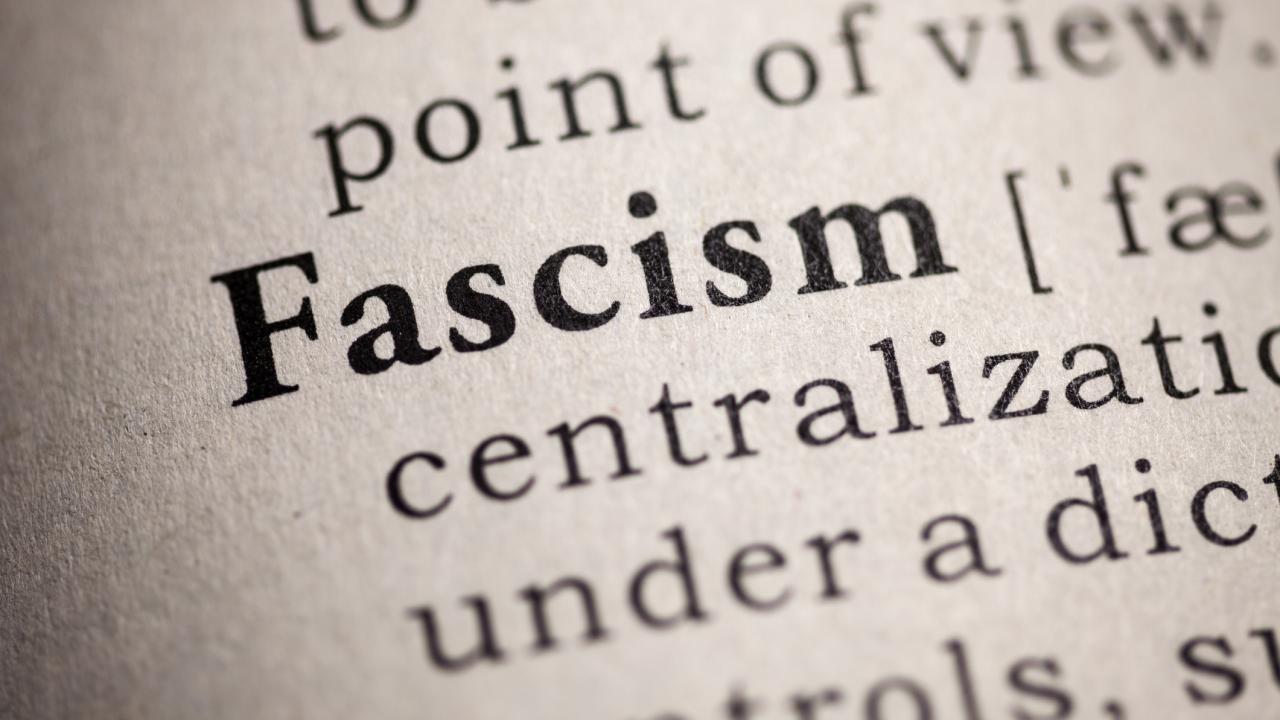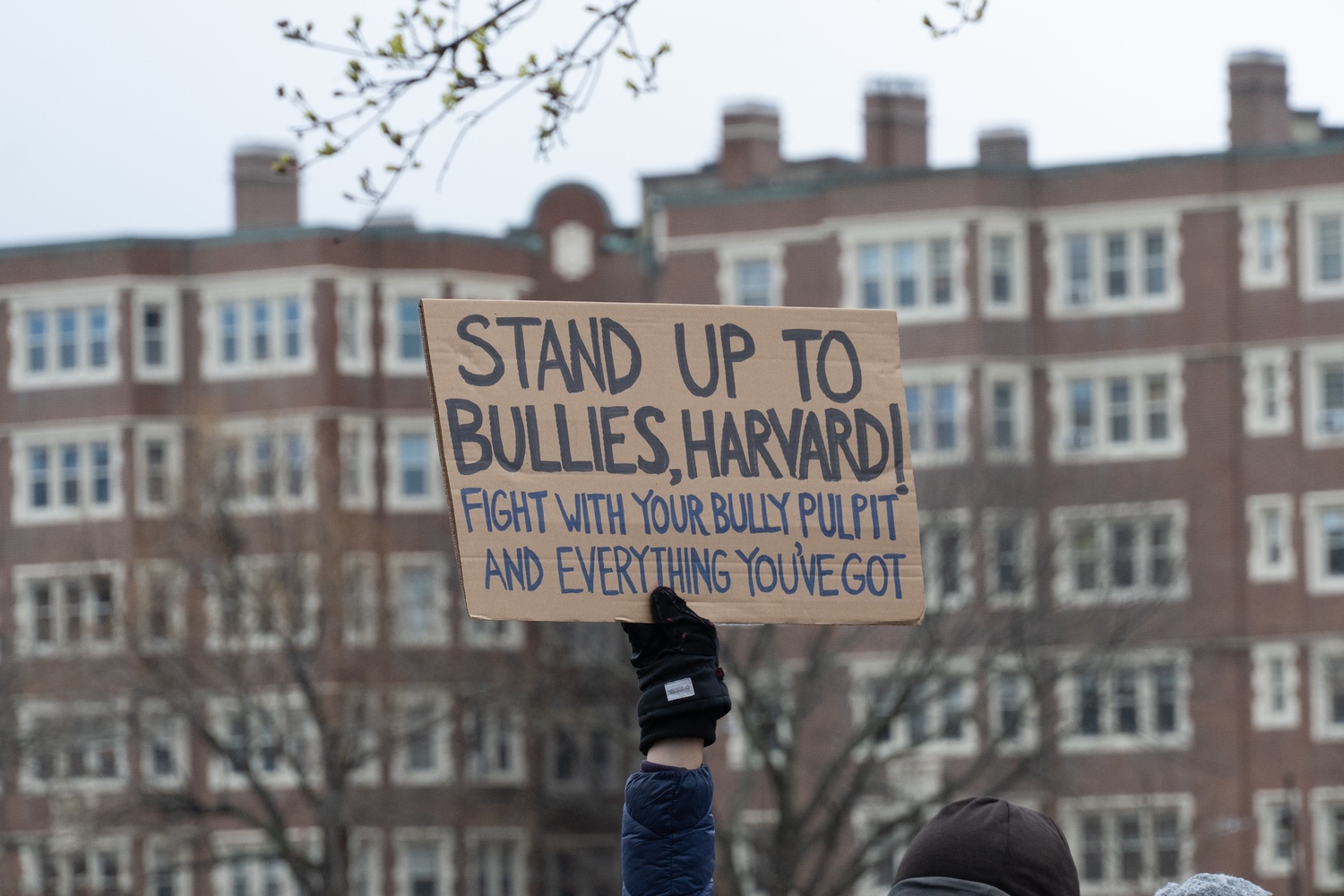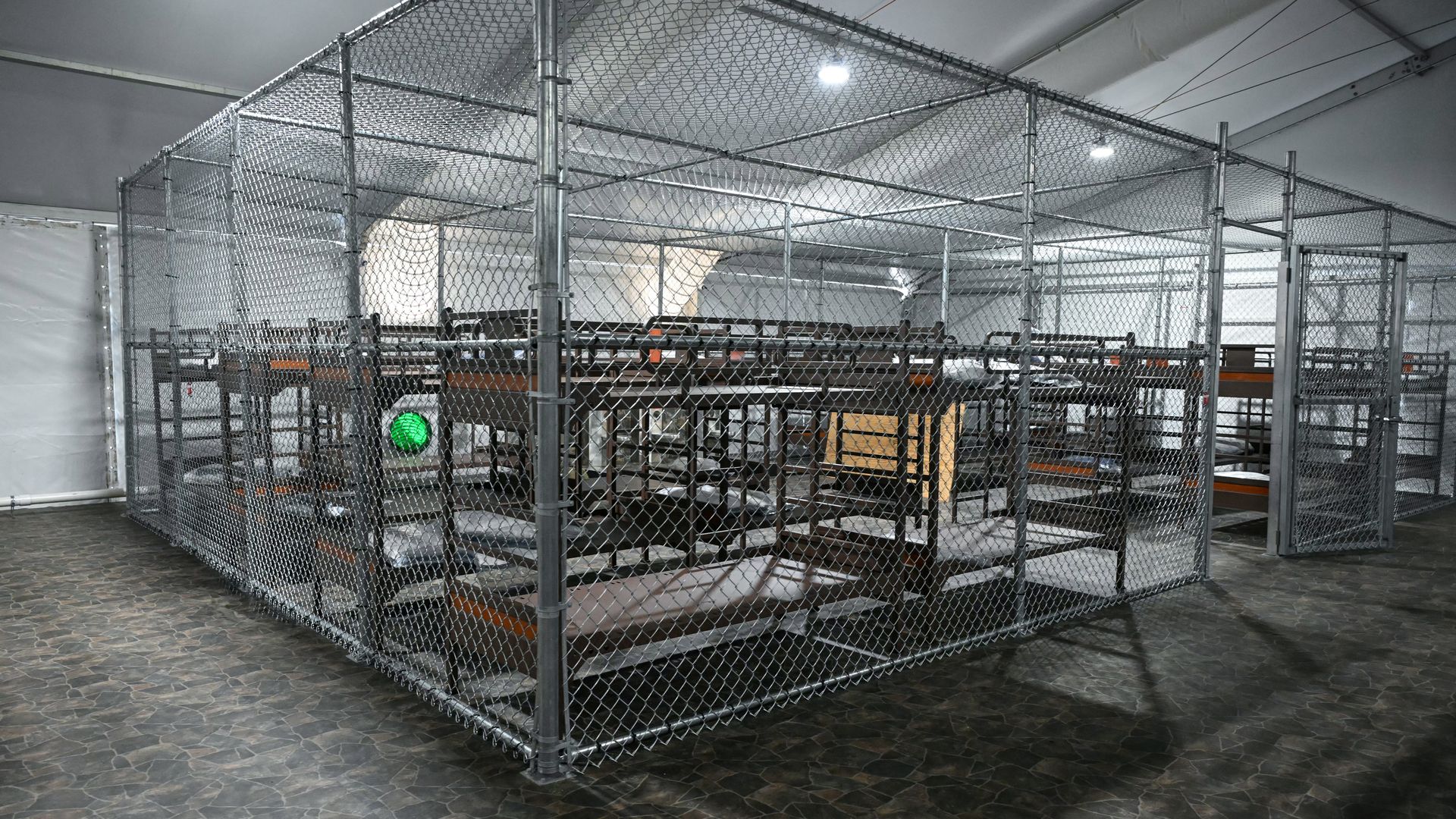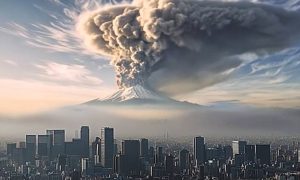Recent months have seen the U.S. government deploy secretive, masked enforcers, detain critics without due process, ignore court orders, and intimidate dissenters – all clear hallmarks of authoritarianism.
Do you remember the 1996 film Twister? It was an instant classic, a disaster film that gave us memorable characters, groundbreaking special effects, and – as everyone inevitably recalls – a flying cow.
There was one particularly impactful scene set at a rural drive-in theatre. As the night sky flashes ominously with lightning, a devastating storm looms – unseen but unmistakably near. The movie is still playing onscreen, but nature has already changed the script.

“The tornado’s coming! It’s headed right for us!” someone yells. Bill Paxton’s character doesn’t even flinch. His steely reply is sober, determined, and almost resigned: “It’s already here.”
That line echoes loudly today. While many Americans may debate about whether fascism is “on the rise,” “a looming threat,” or “just around the corner,” the more honest answer is far simpler – and far more distressing: It’s already here. The America of old has, in a span of just six months or so, been replaced by an authoritarian state to a much greater extent than many may realize.
Expats have the uncommon experience of being able to view their home country from afar, to see things through a different lens. Living abroad often changes our perspectives, but at a minimum, it exposes us to an alternative narrative and different ways of thinking. As an American expat who has been living outside of his home country for many years, what’s now happening in the U.S. is devastating to witness from outside – in ways that may not always be obvious to people living in the midst of the daily chaos. Perhaps many of them are becoming inured to the daily onslaught of one norm-breaking outrage after another.

But we cannot – must not – ignore the clear evidence that’s being presented. Just as in the film Twister, the catastrophic damage isn’t merely a future possibility. It’s here, and it’s happening now.
I was curious to learn the historical context for the rise of fascism, so I checked. There is a fairly standard playbook when it comes to how authoritarian regimes have generally established themselves, based on common actions and themes observed across numerous countries and different eras. But first, a definition:
Fascism (noun) [fash-iz-uhm]: a political system where a dictator or strong central government has complete control over the lives of people, suppressing opposition and emphasizing aggressive nationalism and often racism. Characterized by authoritarian rule, suppression of dissent, and an ideology that promotes national unity and often racial or ethnic superiority.

CREATING A FASCIST STATE: A HOW-TO GUIDE FOR THE ASPIRING DICTATOR
STAGE 1: EXAGGERATE A CRISIS
- Leverage a real or manufactured crisis (war, terrorism, economic collapse, social unrest) to generate fear and urgency.
- Promise “strong leadership” to restore order or greatness.
- Frame existing institutions as too weak or corrupt to handle the crisis.
STAGE 2: CREATE A COMMON ENEMY
- Blame internal or external groups (minorities, immigrants, political opponents, intellectuals, foreign powers).
- Stoke nationalism, xenophobia, or religious fervour to unify the populace against these “enemies.”
- Label critics as unpatriotic or traitorous.
STAGE 3: UNDERMINE DEMOCRATIC INSTITUTIONS
- Attack the credibility of the judiciary, press, universities, and other independent institutions.
- Undermine elections through voter suppression, disinformation, or fraud claims.
- Replace or sideline civil servants and officials with loyalists.
STAGE 4: CONTROL THE NARRATIVE
- Use propaganda and state media to shape public perception.
- Suppress independent journalism and dissenting voices.
- Flood the public sphere with lies, conspiracy theories, or contradictory messaging to create confusion.
STAGE 5: ERODE THE RULE OF LAW
- Ignore or rewrite constitutional norms.
- Pass laws to expand executive powers under the guise of national security or emergency.
- Criminalise protests and restrict civil liberties.
- Use law enforcement selectively to target opponents.
STAGE 6: MILITARIZE AND INTIMIDATE
- Increase police and paramilitary presence in public spaces.
- Deploy masked or unidentified security forces.
- Conduct arbitrary arrests, surveillance, and harassment of activists or journalists.
- Begin detentions without trial, often in unofficial or extrajudicial facilities.
STAGE 7: ELIMINATE CHECKS AND BALANCES
- Weaken or dissolve the legislature or judiciary.
- Bypass parliamentary or judicial review entirely.
- Declare martial law or permanent states of emergency.
- Rule increasingly by decree.
STAGE 8: CONSOLIDATE PERSONAL POWER
- Cultivate a cult of personality around the leader.
- Extend term limits or abolish elections altogether.
- Rewrite history and educational curricula to glorify the regime.
- Crush any remaining opposition through violence or exile.

If many of items on this to-do list sound familiar, you have likely been paying close attention to U.S. politics. I was shocked at how much on this list is being followed to the letter by the Trump Administration.
To be sure, these steps don’t always occur in strict order, nor are they always obvious at first. Often, they unfold slowly – introduced and normalized bit by bit – until resistance becomes difficult or dangerous. It’s the sociopolitical equivalent of the old “frog in the pot” allegory. Unaware that the slowly, steadily rising temperature will ultimately prove fatal, the frog remains in the pot until it’s too late to leap to safety.
Unsurprisingly, the warning signs are nearly always visible and abundantly evident in hindsight. The challenge is recognizing them in real time.

We’ve finally entered a moment where the alarms about creeping authoritarianism in America are no longer alarmist; they are indicators of current reality. Over the last six months, institutions once anchored in due process, transparency, and accountability have been almost methodically eroded. Instead, we’ve seen multiple documented cases where power became secretive, unaccountable, and punitive. Authoritarianism is not coming to the United States; it is already here.
MASKED AGENTS, SECRET POLICE
Across the country, immigration raids and law enforcement operations are now increasingly conducted by masked, plainclothes agents – some of whom critics say are effectively no more than untrained, outsourced vigilantes – who refuse to identify themselves.

In cities and states from Los Angeles to Oklahoma to Massachusetts, individuals have reported being detained by armed men in unmarked vehicles, with no badges, identification or warrants shown. These masked agents operate with near impunity – and the imagery they project is chillingly reminiscent of secret police in authoritarian states.
One recent case made U.S. headlines when masked ICE (Immigration and Customs Enforcement) agents seized a Tufts University student, Rumeysa Öztürk, accused of co-authoring a critique of the Gaza war. She was flown some 2,400 km to Louisiana and detained without due process despite court orders. A judge later ruled her detention lacked any legal basis and ordered her release on bail.

COURT ORDERS IGNORED, CONSTITUTIONAL PROTECTIONS SIDELINED
In another well-documented case, deportee Kilmar Abrego Garcia’s attorneys accused the U.S. government of ignoring multiple court orders during his removal proceedings. His legal team has sought sanctions, arguing the administration is flouting judicial authority – and normal rules of evidence and discovery. Add to this the DOJ’s dropped felony charges against protestors in Los Angeles after investigators admitted to false statements and inflated allegations, and it’s plain that official narratives are increasingly unmoored from fact or accountability. As long as the initial act gets the headlines, the clean-up or backtracking happens largely behind the scenes and away from media attention.
Donald Trump also goes on unhinged screeds against judges who rule counter to his own will, posting insults and rants on social media. Since taking office in January 2025, Trump has resumed a now-familiar pattern of aggressively attacking members of the judiciary who rule against his administration, and often, his administration lackeys follow suit.

When U.S. District Judge James Boasberg blocked mass deportation flights under the Alien Enemies Act in March, Trump branded him a “Radical Left Lunatic” and called for his impeachment. The response drew rare public concern from Chief Justice John Roberts. Similarly, after Judge Paul Engelmayer halted an executive order restricting access to Treasury systems, the White House accused the judiciary of overreach, and Trump allies like Elon Musk openly suggested mass judicial impeachments.
Other rulings have triggered similar responses. When Judge William Alsup ordered unlawfully dismissed government employees reinstated, Trump’s Press Secretary Karoline Leavitt dismissed the decision as “absurd” and declared that judges should “run for president” if they wanted executive power. Across the board, legal experts and watchdog groups have flagged a rise in harassment against judges following these presidential tirades, including online doxxing and coordinated intimidation campaigns. Critics argue this is part of a broader effort to undermine judicial independence and consolidate executive control – again following the authoritarian playbook.
MUZZLING DISSENT, THREATENING CRITICS
Efforts to silence critics go beyond enforcement raids. Some detained individuals were targeted due to published opinions or political activism. The Öztürk case specifically noted that her arrest stemmed, at least symbolically, from critical commentary – prompting warnings from civil liberties groups that dissent is increasingly policed in a non-transparent way.

At the same time, federal agents have raided protests, arresting journalists and advocates without warning – even though many clearly cited First Amendment protections. Public interest attorneys describe the behaviour as “kidnapping” on the streets of America, likening it to political repression rather than civic enforcement.
Moreover, since returning to office, Trump has increasingly used the power of the presidency to bully law firms, universities, and media outlets into submission. Major legal firms have withdrawn from civil rights cases after public attacks from Trump allies (and several have promised millions of dollars in free legal services), while several universities have faced funding threats over curriculum content or admission policies deemed unsuitable by the administration. Critics warn that such coordinated pressure campaigns are chilling dissent and eroding institutional independence across the board.

MASS DETENTION AND CONCENTRATION‑STYLE CAMPS
While the term “concentration camp” evokes horrific images from another era, current U.S. detention practices are drawing disturbing comparisons. One stark example is the recently expanded migrant holding facility in Florida – an isolated, heavily fortified compound surrounded by swampland and wildlife, including alligators, leading the facility’s proponents to call it “Alligator Alcatraz,” a nickname that has garnered plenty of criticism that suggests it cartoonishly minimizes the inhumanity dished out at this centre. Built to house unaccompanied minors and asylum seekers, the facility has come under fire for its remote location, restricted access, and lack of transparency.
In June 2025, a federal court blocked the Trump administration’s attempt to rewrite the Flores Settlement Agreement, which limits how long children can be held in custody. The proposed changes would have allowed indefinite detention with reduced judicial oversight – a move widely condemned as unconstitutional. Despite the ruling, thousands of detainees remain in limbo under opaque, inhumane policies that defy basic standards of care and due process. The grim stories that have emerged from this facility are, to put it mildly, outrageous.

CHILLING EFFECTS ACROSS THE BOARD
The combined effect is unmistakable: disproportionate secrecy, unchecked force, disregard for judicial authority and political intimidation. Critics warn that these trends go beyond immigration – they are strategic moves toward dismantling legal accountability, suppressing dissent and centralizing unchecked power. Project 2025, a detailed blueprint circulated among MAGA-aligned circles, explicitly calls for purging civil service, turning the justice system into an arm of the presidential agenda, replacing independent officials with loyalists, and erasing oversight structures and institutions altogether.
WILL AMERICANS NORMALIZE AUTHORITARIANISM – OR CHOOSE RESISTANCE?
The optics are striking: masked enforcers, shameless disregard for court rulings, and detention systems operating with minimal transparency. The target has often been the most vulnerable – immigrants, critics, and protestors. If the tools of repression can be wielded without legal check, what remains of constitutional protections?

This is no longer dystopian speculation. These are actions unfolding in real time, in defensible court filings and documented raids. When civil liberties advocates say “fascism has come,” they don’t mean it’s simply near. It’s already here. If the rapid changes we’ve seen unfolding in the United States tell us anything, it should be that democracy is a fragile system. It must be nurtured, protected, and defended.
From my home away from home, here on the other side of the world, I can only hope that enough of my fellow Americans of conscience – from across the political spectrum – see what is happening, recognize what’s taking place, and fight for democracy, employing every practical tool of resistance against the fascism that is already there.

SOURCES AND FURTHER READING:
- AP News – Face‑Covering Agents and Public Trust
- The Week – Are Masked ICE Agents America’s Secret Police?
- Kansas Reflector – Masked Agents Operating Without Identification
- The New Yorker – ICE’s Spectacle of Intimidation
- Reuters – Tufts Student Ordered Released from ICE Detention
- Washington Post – Rumeysa Öztürk Secretly Detained by U.S. ICE
- AP News – Judge Criticizes Government for Defying Ruling in Abrego Garcia Case
- Maryland Matters – U.S. Moves to Dismiss Lawsuit Over Deportation
- The Guardian – Law Enforcement Gave False Testimony in LA Protest Cases
- Lofgren.House.gov – Project 2025 Blueprint to Dismantle U.S. Democracy



















